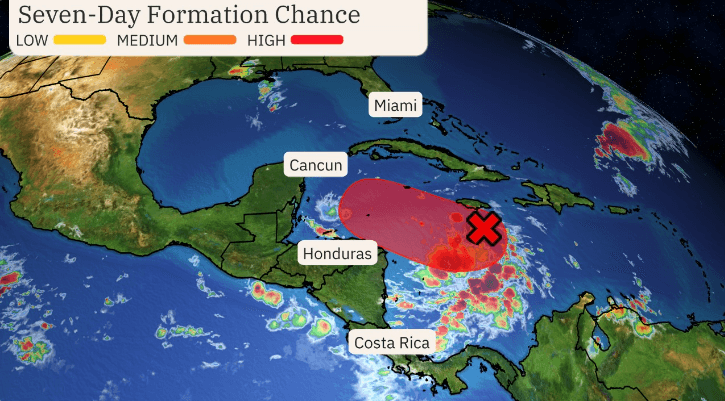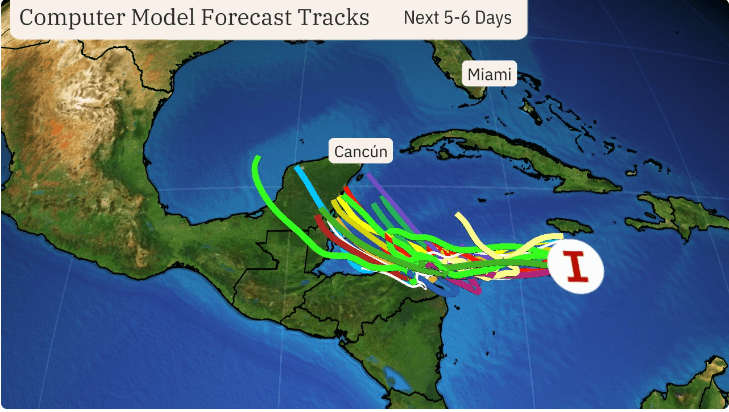
hurricane sara track system is developing in the Caribbean, and it might soon become the Atlantic hurricane season’s 18th named storm—Sara. Currently known as “Invest 99L,” this low-pressure system, observed by the National Hurricane Center (NHC), shows signs of strengthening and could become a tropical depression in the coming days. The forecast, however, remains uncertain, as meteorologists closely monitor potential paths and outcomes.
Formation and Potential Strengthening
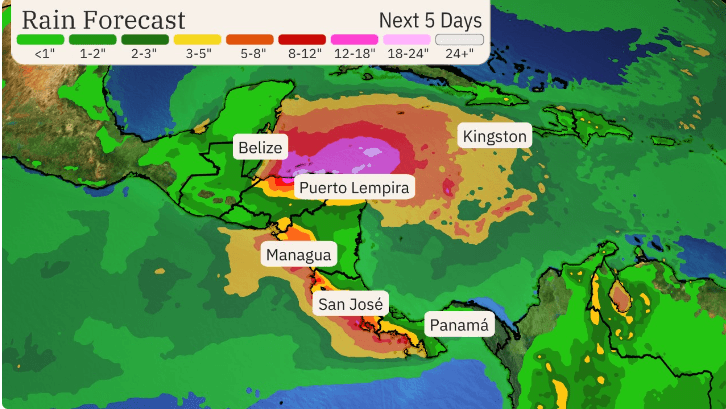
Invest 99L is located in the Caribbean, a region still experiencing record-warm waters despite it being November. These conditions, combined with relatively low wind shear, provide an environment conducive to tropical storm development. The NHC plans to send a Hurricane Hunter mission to assess Invest 99L’s structure and behavior, which could shed light on the system’s future. With the current forecasts, it’s likely that this storm will become Tropical Storm Sara before intensifying further, possibly reaching hurricane status in the western Caribbean Sea.
Uncertain Path Ahead
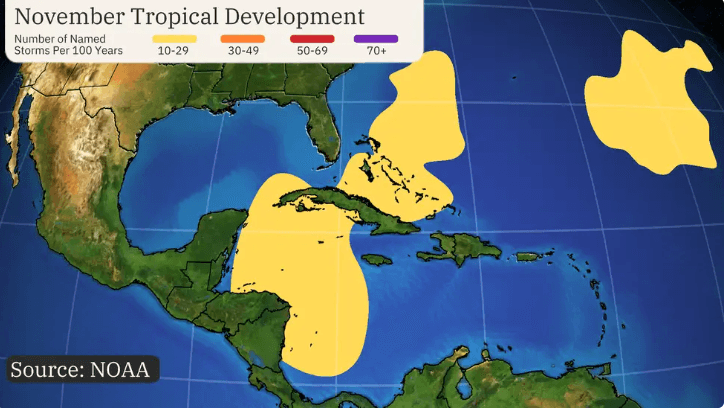
Though still developing, computer models offer early guidance on Sara’s potential path. The current projections show it moving westward toward Central America and the Yucatan Peninsula, with some scenarios suggesting a possible northward shift into the Gulf of Mexico. Another possible outcome is a gradual drift eastward, where Sara could stall or make landfall in Central America, causing it to lose strength before potentially re-emerging in open waters.
If hurricane sara track does move northward, a cold front moving through the U.S. could steer it toward the Yucatan Peninsula, the southern Gulf of Mexico, or western Cuba by early next week. From there, the system might make its way across parts of Florida or Cuba, potentially as a weakened or redirected storm. Given the many variables, including interactions with land and changing atmospheric conditions, any specific impacts for Florida and neighboring areas remain uncertain.
Potential Risks and Warnings
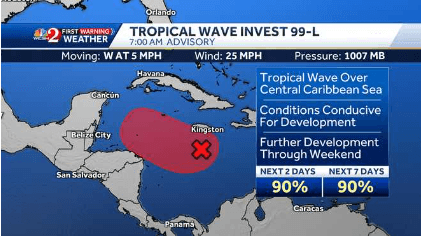
One significant threat posed by hurricane sara track is heavy rainfall, which could lead to life-threatening flash flooding and mudslides, especially if it stalls near Central America. This slow movement pattern could concentrate rainfall over affected areas, increasing the risk of severe weather impacts even if Sara doesn’t reach full hurricane strength.
The NHC advises all residents in the western Caribbean and along the Gulf Coast to stay updated, as any shifts in hurricane sara trackpath could bring unexpected effects. Changes to Sara’s trajectory and strength will become clearer as it approaches, with additional insights expected from the scheduled Hurricane Hunter flight and evolving model predictions.
November Storms in the Atlantic
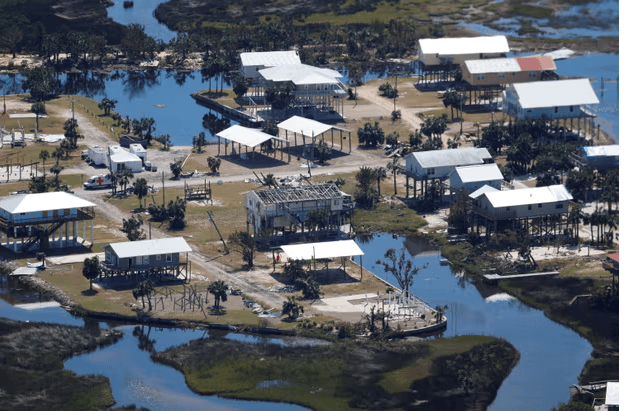
While the Atlantic hurricane season is typically quieter in November, the western Caribbean and Central Atlantic remain vulnerable to storms. Factors such as warmer-than-average waters and the limited reach of cold fronts in November create favorable conditions for late-season tropical development. In recent years, November storms have brought significant impacts, especially to Caribbean and Central American regions.
With hurricane sara track potentially joining November’s active storm roster, residents and local authorities in vulnerable areas should remain vigilant. The Atlantic hurricane season officially concludes at the end of November, but Sara’s development is a reminder that even late-season storms can bring impactful weather.


